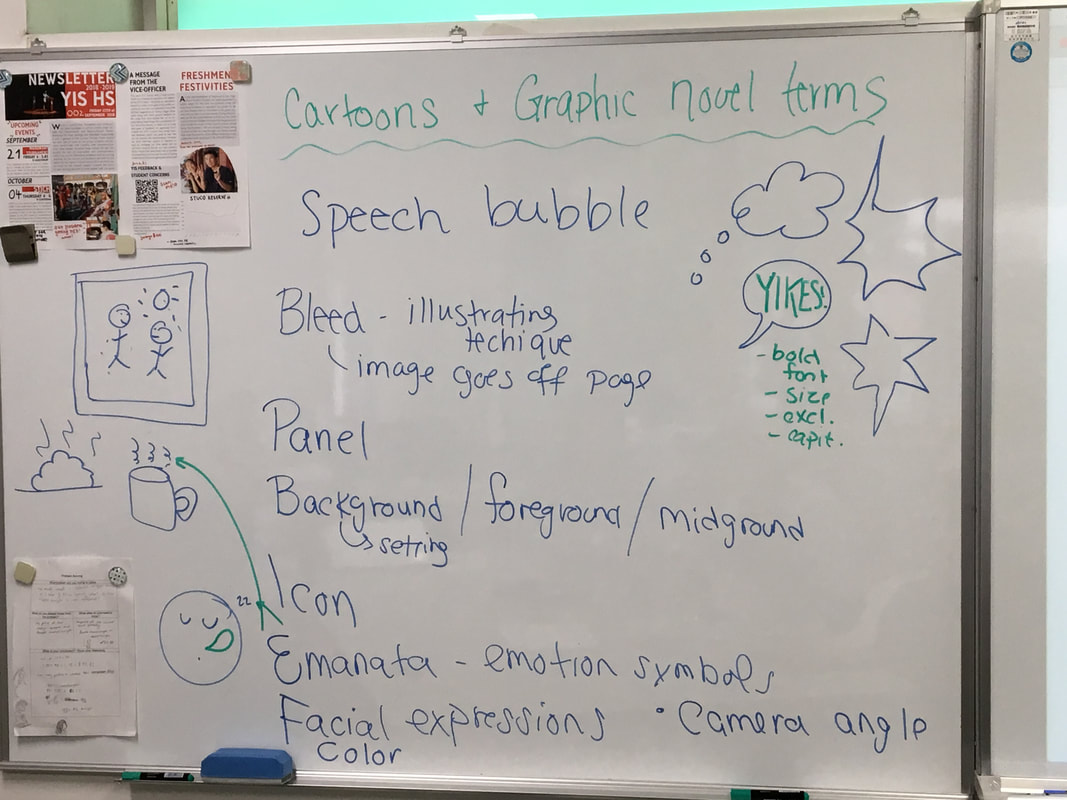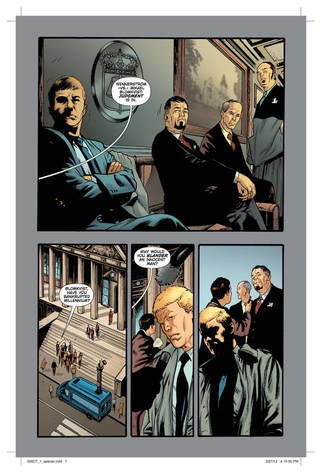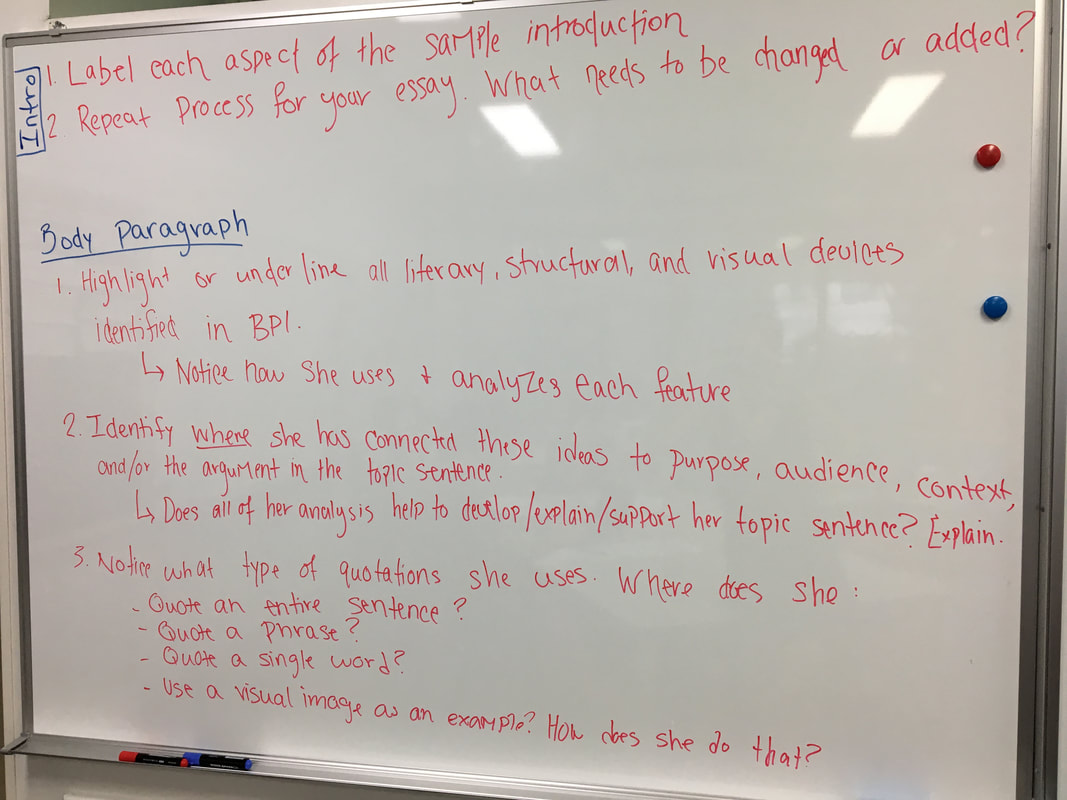- External Assessment (2 hours)
- 25% of overall mark
- The paper consists of two pairs of unseen texts.
- Students write a comparative analysis of one pair of texts. (20 marks)
What is the Paper 1?
Paper 1 contains two pairs of previously unseen texts for comparative analysis. The pairing could include two non-literary texts or one literary and one non-literary text. There will never be two literary texts in a pair. Each pair will be linked in such a way that invites investigation of similarities and differences. Students are instructed to compare and analyse one of the pairs of texts, including comments on the similarities and
differences between the texts, the significance of any possible contexts, audience and purpose, and the use of linguistic and literary devices.
A pair may include complete pieces of writing or extracts from longer pieces, or a combination of these. The provenance of all texts will be clearly indicated. One of the two pairs may include one visual text. This could be an image with or without written text. The texts for analysis are not necessarily related to specific parts of the syllabus. The links between texts will be varied and could include theme, genre features or narrative stance.
Students are required to analyse, compare and comment on the texts in the light of their understanding of audience and purpose. In order to achieve this, students need to analyse structure, language and style in addition to aspects such as text type, context, bias and/or ideological position. The comparative analysis should be continuous and structured, include relevant examples from the texts and be balanced in its comments on the similarities and differences between the texts. Rather than simply listing formal aspects, students should focus on how such aspects are used to create particular effects.
Paper 1 contains two pairs of previously unseen texts for comparative analysis. The pairing could include two non-literary texts or one literary and one non-literary text. There will never be two literary texts in a pair. Each pair will be linked in such a way that invites investigation of similarities and differences. Students are instructed to compare and analyse one of the pairs of texts, including comments on the similarities and
differences between the texts, the significance of any possible contexts, audience and purpose, and the use of linguistic and literary devices.
A pair may include complete pieces of writing or extracts from longer pieces, or a combination of these. The provenance of all texts will be clearly indicated. One of the two pairs may include one visual text. This could be an image with or without written text. The texts for analysis are not necessarily related to specific parts of the syllabus. The links between texts will be varied and could include theme, genre features or narrative stance.
Students are required to analyse, compare and comment on the texts in the light of their understanding of audience and purpose. In order to achieve this, students need to analyse structure, language and style in addition to aspects such as text type, context, bias and/or ideological position. The comparative analysis should be continuous and structured, include relevant examples from the texts and be balanced in its comments on the similarities and differences between the texts. Rather than simply listing formal aspects, students should focus on how such aspects are used to create particular effects.
|
HL Paper One Rubric
|
Paper One Success Criteria
|
|
| ||||||||||||
|
| ||||||||||||
How to Write a Paper One
HL Paper One Structure
| paper_one_structure_hl_.docx | |
| File Size: | 136 kb |
| File Type: | docx |
Steps to analysis
- Read both texts.
- Identify the common link between texts - What is the topic or issue addressed in both texts?
- How do both texts deal with or address this issue?
- Identify TAMP for both texts
T: text type
A: audience
M: main idea
P: purpose - Annotate/identify stylistic features (literary and structural features)
- Identify 3-4 big ideas, themes, or aspects of the texts
- Write a thesis statement
- Write 3-4 topic sentences. How should you arrange the arguments? Does your final topic sentence have the "so what?" factor? (the culminating/most important idea).
Steps to writing an argument/claim i.e. thesis statement and topic sentences
Example argument: While text 1 encourages its audience to conform to gender stereotypes in order to create a stable society, text 2 argues against this flawed perception and challenges its audience to shift its perspective on gender equality.
Example topic sentence: Both texts expose the flawed gender divide in Western society through the use of an extended metaphor.
Development of Arguments: On the success criteria, it states, "When I pull out my topic sentences, I see clear development of the thesis statement." Have I done the following:
- Identify the subject. ex. both texts; the writers; the author; text 1 and text 2
- Choose a strong verb. ex. critique, expose, juxtapose
- Write a debatable opinion. i.e. what point are you arguing about the text?
- Optional: Include the language devices. If you are analyzing only symbolism in both texts, be sure to include it in the argument. Do not include features in a thesis statement.
Example argument: While text 1 encourages its audience to conform to gender stereotypes in order to create a stable society, text 2 argues against this flawed perception and challenges its audience to shift its perspective on gender equality.
Example topic sentence: Both texts expose the flawed gender divide in Western society through the use of an extended metaphor.
Development of Arguments: On the success criteria, it states, "When I pull out my topic sentences, I see clear development of the thesis statement." Have I done the following:
- Are my arguments organised in "chronological" order?
- Are my ideas building from one topic sentence to the next?
- Is my final topic sentence examining the larger concept or idea being exposed through the texts (the "so what?" factor)?
Text Types
Newspaper Articles
|
| ||||||||||||
Satire
Comics / Cartoons
Cartoon Analysis Overview with Terms Other terms In addition, there are five main tools used by cartoonists:
|
Images - Mise en scene
Image Analysis / Mise en scene Features (click)
Graphic Novel Terminology
Click HERE for an overview of graphic novel terminology and camera perspective
| ||||||
Exemplar Essays and Analysis
Student Essay
Text 1: 1950s Van Heusen Advertisement
Text 2: Emma Watson UN Speech
Text 1: 1950s Van Heusen Advertisement
Text 2: Emma Watson UN Speech
| sample_comparative_commentary_-_gender.docx | |
| File Size: | 1084 kb |
| File Type: | docx |
Student Essay: Life Insurance
Text A: "Don't bury your head in the sand"
Text B: "Are you making plans for your wife's death?
| insurance_exemplar__cw_.docx | |
| File Size: | 152 kb |
| File Type: | docx |
Sample paragraph: Another Life Insurance student example
Note: More development of analysis is needed. However, notice how the student analyzes the context and connects the ideas from both texts together.
Note: More development of analysis is needed. However, notice how the student analyzes the context and connects the ideas from both texts together.
Thesis: Both texts 1 and 2 juxtapose one another in their portrayal of the role of the “breadwinner” and the “housemaid” within a family, and in this way expose the methods through which the media exploits gender roles to market goods and services.
Both texts expose the gender roles within a family at the time of publication. Set in the 1980s, text 2 reveals the rigid gender dichotomy prevalent at the time. Despite the widespread introduction of women into the workplace, the advertisers make the assumption that the father is the breadwinner of the family, asking the rhetorical question: “Could you be an executive by day and a chambermaid by night?” The antithesis between the connotation of power behind the word “executive” and the connotation of submissiveness behind “chambermaid” highlights and enforces the patriarchal paradigm entrenched in 1980s Western society. On the other hand, text 1 states, “ many women of the house are the breadwinner,” contradicting the view of the makers of text 2. A comparison of the two texts reveals a shift in gender roles over the period of 3 decades. Text 1 writes “even in a two-income family,” addressing the possibility of families without a housewife-and-money-making-husband dynamic, whereas text 2 states that the “wife will be the one who will need the financial looking-after.” The breaking down of defined gender roles within a family is further developed in the statement “parents depend on each other.” The use of the plural noun “parents” shows that there is a mutual relationship between the two parties, suggesting that one parent is no more important than the other. Gammell also writes, “a parent’s responsibility continues even after death.” The choice of diction, how she did not assign a gender to the said parent, highlights that childcare is an essential part of parenthood for both the mother and the father. In contrast, text 2 asks rhetorical questions to the reader about whether they “could ever devote the sort of time to [the children]… nightly bedtime stories… teach[ing] them what’s what in the big wide world?” Text 2 is an advertisement intended for a working male audience, ergo, this line of questioning implies that the wife is the one who ordinarily cares for the children. The idea of the wife being the “chambermaid” and “nursemaid” is further built upon through the layout of the advertisement where the word “wife” is bolded in the headline, thus reducing the female's role. Framing the ad are four images of household items often associated with housework. By highlighting the term “wife” and household appliances, the makers of the text are associating two ideas and showing that the home cannot function without a woman/wife, thus solidifying the gender stereotypes of the 1980s.
Both texts expose the gender roles within a family at the time of publication. Set in the 1980s, text 2 reveals the rigid gender dichotomy prevalent at the time. Despite the widespread introduction of women into the workplace, the advertisers make the assumption that the father is the breadwinner of the family, asking the rhetorical question: “Could you be an executive by day and a chambermaid by night?” The antithesis between the connotation of power behind the word “executive” and the connotation of submissiveness behind “chambermaid” highlights and enforces the patriarchal paradigm entrenched in 1980s Western society. On the other hand, text 1 states, “ many women of the house are the breadwinner,” contradicting the view of the makers of text 2. A comparison of the two texts reveals a shift in gender roles over the period of 3 decades. Text 1 writes “even in a two-income family,” addressing the possibility of families without a housewife-and-money-making-husband dynamic, whereas text 2 states that the “wife will be the one who will need the financial looking-after.” The breaking down of defined gender roles within a family is further developed in the statement “parents depend on each other.” The use of the plural noun “parents” shows that there is a mutual relationship between the two parties, suggesting that one parent is no more important than the other. Gammell also writes, “a parent’s responsibility continues even after death.” The choice of diction, how she did not assign a gender to the said parent, highlights that childcare is an essential part of parenthood for both the mother and the father. In contrast, text 2 asks rhetorical questions to the reader about whether they “could ever devote the sort of time to [the children]… nightly bedtime stories… teach[ing] them what’s what in the big wide world?” Text 2 is an advertisement intended for a working male audience, ergo, this line of questioning implies that the wife is the one who ordinarily cares for the children. The idea of the wife being the “chambermaid” and “nursemaid” is further built upon through the layout of the advertisement where the word “wife” is bolded in the headline, thus reducing the female's role. Framing the ad are four images of household items often associated with housework. By highlighting the term “wife” and household appliances, the makers of the text are associating two ideas and showing that the home cannot function without a woman/wife, thus solidifying the gender stereotypes of the 1980s.
May 2018 Exam: Exemplar (IB 7)
Text 1: The Great Gatsby
Text 2: Guardian article on "Materialism"
Text 1: The Great Gatsby
Text 2: Guardian article on "Materialism"
| gatsby_materialism_-_may_2018_exam.pdf | |
| File Size: | 419 kb |
| File Type: | |
Spinster Exemplar (IB 7)
Text 1: Marvel cartoon
Text 2: Tiny Buddha
Text 1: Marvel cartoon
Text 2: Tiny Buddha
| exemplar_spinster_essay_.pdf | |
| File Size: | 1632 kb |
| File Type: | |
With this exemplar, please notice the following:
- Analysis: The specific use of literary and visual features - notice the unique interpretation and comment on each feature
- Organization: Notice how the topic sentences build on each other and work towards a final point about the texts.
- Context: Notice how the student comments on context throughout and looks for similarities and differences. This essay focuses on the nuances of the text rather than a black and white interpretation.



